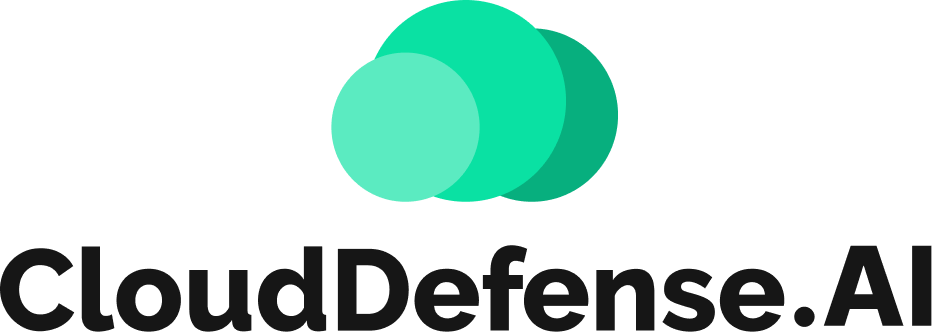What is a Cloud Native App?
A cloud-native app is a software application specifically designed to run in cloud environments, taking full advantage of cloud computing’s scalability, flexibility, and resilience. Unlike traditional applications that were built for on-premises infrastructure and later migrated to the cloud, cloud-native apps are built from the ground up to leverage cloud services.
Why Cloud-Native Apps Matter?
- Faster Development & Deployment: Since microservices can be updated individually, new features and fixes reach users faster.
- Cost Efficiency: Cloud-native architectures optimize resource usage, reducing infrastructure costs.
- Improved Performance: Apps can scale automatically and handle varying workloads efficiently.
- Greater Flexibility: Cloud-native apps can run on public, private, or hybrid clouds, providing businesses with deployment options.
Examples of Cloud-Native Apps
- Netflix: Uses microservices and Kubernetes to handle millions of streams globally.
- Uber: Scales ride-matching and payment processing dynamically based on demand.
- Spotify: Manages personalized music recommendations through cloud-native data processing.
Cloud-native apps are the future of modern software development. By embracing microservices, containers, and automation, businesses can build resilient, scalable, and high-performing applications that meet the needs of today’s fast-moving digital world.
How Does a Cloud Native Approach Benefit Business?
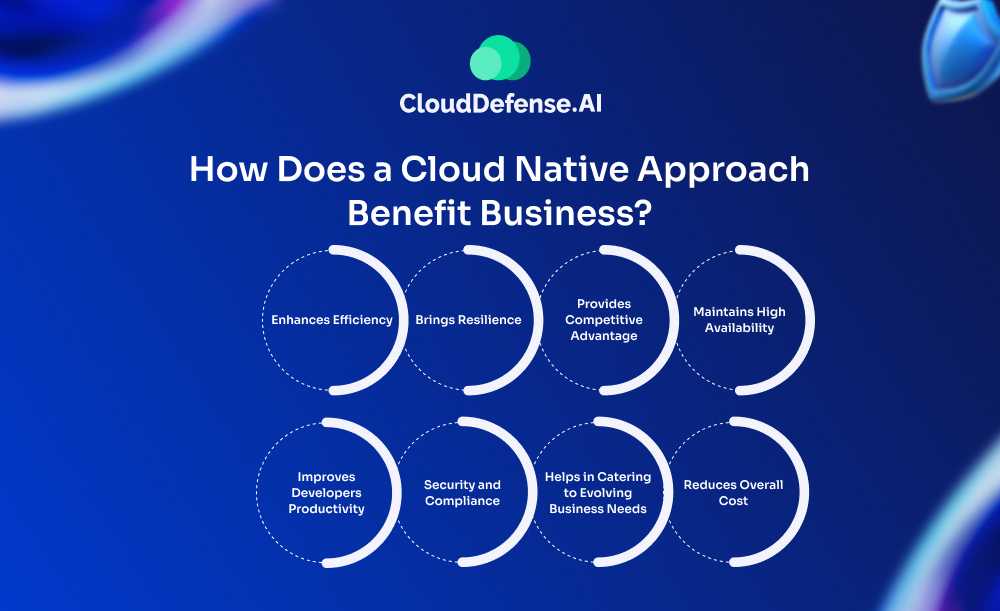
Modern businesses benefit significantly from the cloud-native approach, as it supports them in various ways to build resilient, scalable, and flexible cloud-native applications. Here are the benefits that the cloud-native approach offers:
Enhances Efficiency
A cloud-native approach boosts development agility by integrating DevOps and CI/CD practices. Developers can leverage cloud services, automation tools, and modern architectures to rapidly build and deploy scalable applications.
Greater Resilience
Cloud-native applications are designed to handle operational and security challenges effectively. Developers can seamlessly move applications across environments without worrying about infrastructure complexities, ensuring smooth updates and high reliability.
Competitive Advantage
With cloud-native features, businesses can accelerate product deployment while minimizing testing time. The DevOps culture fosters rapid innovation, allowing organizations to stay ahead of competitors by delivering user-ready applications faster.
High Availability & Scalability
Cloud-native technologies help businesses build robust applications that remain operational under all conditions. Developers can make updates, scale services dynamically, and adapt to customer needs without downtime.
Improved Developer Productivity
Cloud-native tools streamline development workflows, allowing teams to focus on innovation instead of managing infrastructure. By eliminating legacy system constraints, developers can work more efficiently and deliver high-quality applications.
Strong Security & Compliance
Cloud-native security solutions provide real-time monitoring and automated compliance management, ensuring organizations meet regulatory requirements without excessive resource investment. Managed security services further reduce risks and improve visibility.
Adaptability to Evolving Business Needs
Through microservices and containers, businesses can orchestrate their applications dynamically. This modular approach allows for updates and modifications without disrupting the entire architecture, making it easier to respond to changing market demands.
Cost Reduction
By removing the necessity for physical infrastructure, organisations greatly lower operational costs. Cloud-native services enhance resource allocation, assisting businesses in scaling effectively while reducing long-term IT expenses.
A cloud-native approach truly empowers businesses to innovate more quickly, cut down on costs, and boost reliability. By embracing modern development practices, organizations can create applications that are agile, scalable, and secure, helping them position themselves for long-term success.
Key Characteristics of Cloud Native Applications
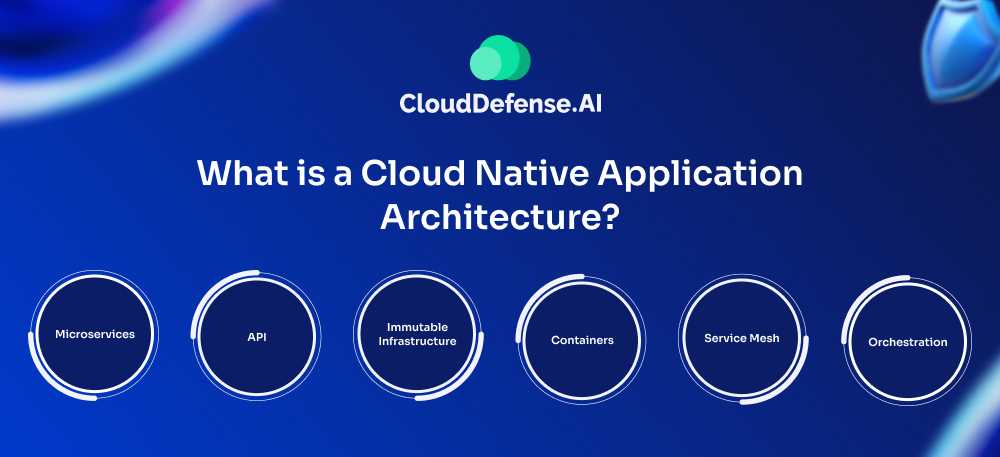
Unlike traditional monolithic architectures, cloud-native applications are designed to be modular, resilient, and dynamically scalable. The Cloud Native Computing Foundation (CNCF) outlines several key building blocks that define cloud-native architecture.
Microservices
Microservices are independent, self-contained services that handle specific functions within an application. Each microservice can be developed, deployed, and scaled separately, enabling faster updates and improving fault tolerance. This modular approach ensures that changes to one microservice do not impact the rest of the application.
APIs (Application Programming Interfaces)
APIs enable seamless communication between microservices by providing a structured way for them to exchange data. In cloud-native applications, APIs facilitate loose coupling, ensuring that services can work together efficiently without direct dependencies.
Immutable Infrastructure
Immutable infrastructure follows the principle that servers and virtual machines (VMs) are never modified after deployment. Instead of making changes to an existing system, a new instance is created, and the application is moved to it. This approach improves consistency, security, and reliability by preventing unintended configuration drift.
Containers
Containers package microservices along with their dependencies, ensuring they run consistently across different environments. They improve application portability, efficiency, and speed, allowing developers to deploy services without worrying about infrastructure compatibility. Tools like Docker and Kubernetes manage containerized applications efficiently.
Service Mesh
A service mesh acts as an application layer that manages secure and reliable communication between microservices. It enables traffic control, security policies, and monitoring without requiring changes to the application code. This is particularly useful in complex, distributed cloud-native applications.
Orchestration
Orchestration is the process of automating deployment, scaling, and management of cloud-native applications. Tools like Kubernetes ensure that all components work together efficiently, maintaining high availability and continuous integration and delivery (CI/CD). Orchestration simplifies application scaling and resource allocation based on real-time demands.
Cloud-native architecture is designed to maximize scalability, resilience, and agility. By using microservices, APIs, containers, service mesh, and orchestration, organizations can build applications that automatically adapt to changing workloads while remaining highly available and efficient.
What is Cloud Native Application Development?
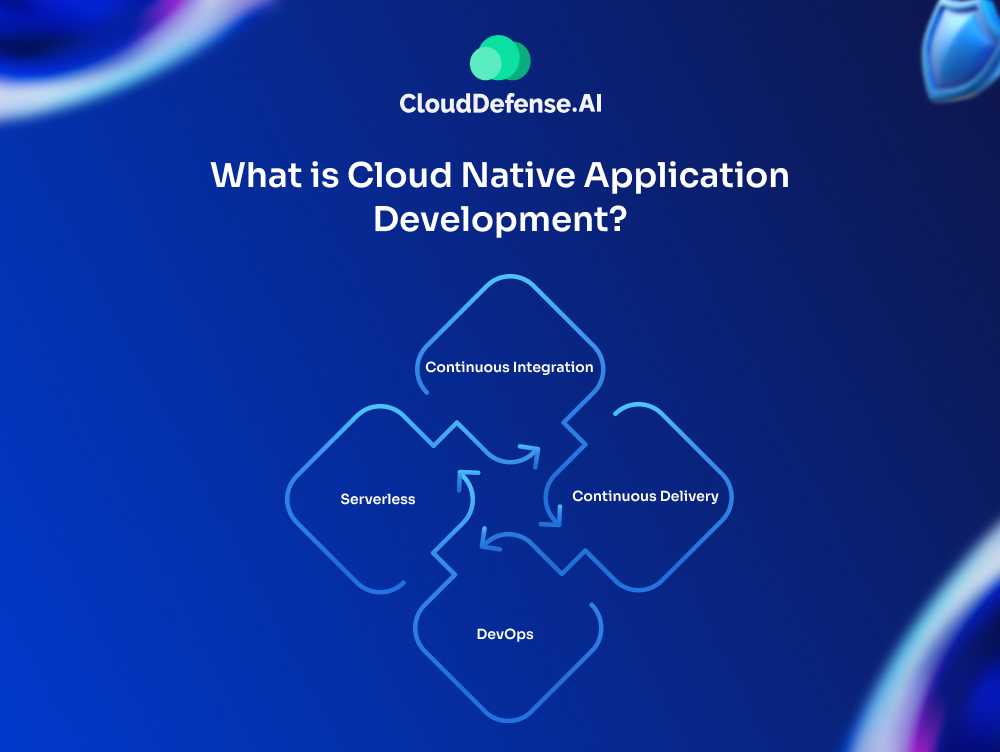
Cloud-native application development involves creating, building, and launching software that is perfectly tailored for cloud environments. This friendly approach emphasizes speed, scalability, and automation, making it easier for developers to swiftly respond to the ever-changing needs of users and businesses alike.
Continuous Integration (CI): Faster Code Integration
Continuous Integration (CI) is a development practice where code changes are frequently merged into a central repository. Automated tests run on each change to identify bugs early, ensuring code quality and accelerating development cycles. CI reduces integration issues, making software updates more seamless.
Continuous Delivery (CD): Smooth and Reliable Deployments
Continuous Delivery (CD) extends CI by automating application deployment into production-like environments. It ensures that microservices are always ready for deployment, allowing businesses to roll out new features and bug fixes with minimal downtime. CD, combined with CI, forms the foundation of efficient software delivery pipelines.
DevOps: Bridging Development and Operations
DevOps transcends methodology; it embodies a collaborative culture uniting development and IT operations teams. By automating workflows, improving monitoring, and enhancing security, DevOps helps organizations build and deploy applications more efficiently and reliably, reducing time-to-market.
Serverless Computing: Deploying Without Managing Infrastructure
Serverless computing enables developers to run applications without managing servers, as cloud providers dynamically handle infrastructure scaling. This model is highly cost-efficient and scalable, making it ideal for applications with variable workloads. Combined with microservices, serverless architectures enhance performance while reducing operational complexity.
Cloud-native application development is not just about coding in the cloud—it’s about using modern development strategies to build applications that are flexible, resilient, and scalable. Embracing CI/CD, DevOps, and serverless computing allows businesses to thrive in the exciting and constantly changing digital landscape.
What is Cloud Native Stack?
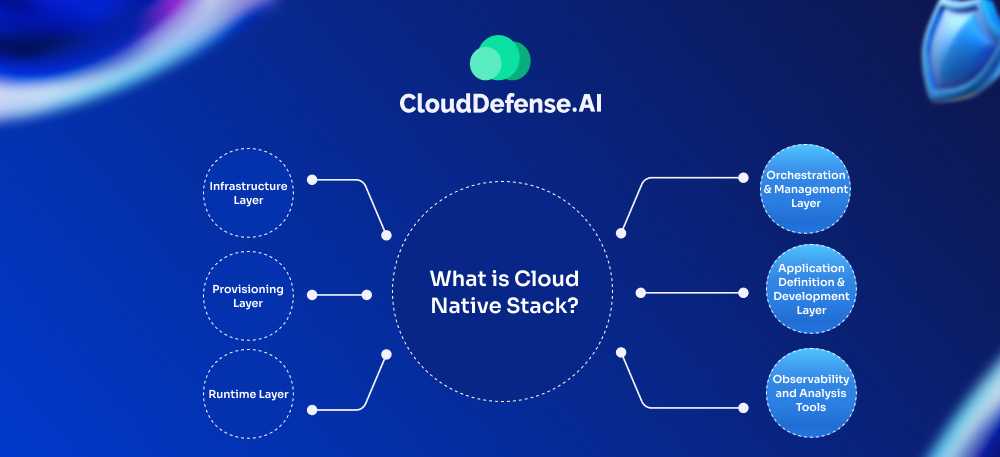
The cloud-native stack is a collection of technologies and tools that enable development teams to build, deploy, and run cloud-native applications efficiently. These tools are organized into distinct layers, each playing a crucial role in ensuring scalability, resilience, and seamless operations.
Infrastructure Layer: The Foundation
At the core of the cloud-native stack is the infrastructure layer, which provides the essential computing, storage, and networking resources needed to support cloud-native applications. This layer is managed by cloud providers (e.g., AWS, Azure, Google Cloud) and includes:
- Operating Systems (Linux, Windows)
- Virtual Machines (VMs) & Bare Metal Servers
- Cloud Networking & Storage Solutions
Provisioning Layer: Configuring the Cloud Environment
The provisioning layer is responsible for allocating, configuring, and securing cloud infrastructure. It includes Infrastructure as Code (IaC) tools like Terraform, CloudFormation, and Ansible, enabling automated provisioning and security management.
Runtime Layer: Powering Cloud Applications
This layer houses the execution environment where containers and microservices operate. It includes:
- Container Runtime Environments (Docker, containerd)
- Cloud Data Storage & Networking Capabilities
- Code Execution & Process Management
Orchestration & Management Layer: Ensuring Seamless Operations
Just as an operating system manages a computer, the orchestration layer coordinates cloud-native applications across distributed environments. Tools like Kubernetes, OpenShift, and Docker Swarm automate:
- Container Deployment & Scaling
- Resource Allocation & Load Balancing
- Fault Recovery & Self-Healing Mechanisms
Application Definition & Development Layer: Building Cloud Applications
This layer includes all the software technologies and frameworks developers use to create cloud-native applications. It encompasses:
- Databases & Storage Solutions (PostgreSQL, MongoDB, S3)
- CI/CD Pipelines (Jenkins, GitHub Actions, GitLab CI/CD)
- Container Images & Messaging Systems
Observability & Analysis Layer: Monitoring Performance
Ensuring the health and performance of cloud-native applications is critical. This layer provides real-time monitoring, logging, and analytics using tools like:
- Prometheus & Grafana (Performance Metrics & Dashboards)
- ELK Stack (Elasticsearch, Logstash, Kibana) (Log Management & Analysis)
- Jaeger & OpenTelemetry (Distributed Tracing & Debugging)
Why the Cloud-Native Stack Matters
A well-structured cloud-native stack enables businesses to scale applications efficiently, automate deployments, and ensure resilience. By leveraging the right mix of **infrastructure, orchestration
Cloud Native Applications vs Traditional Enterprise Applications
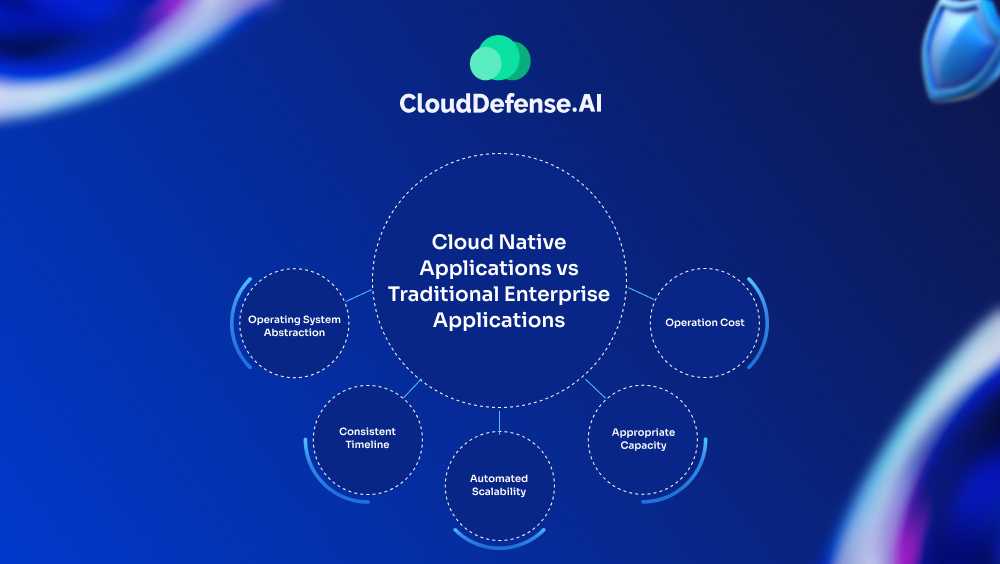
When it comes to cloud native applications, it differs from traditional enterprise applications in many ways. Let’s take a look at how cloud native application gets the edge over the traditional approach:
Operating System Abstraction
Cloud native applications are developed in containers, making it possible for developers to build them regardless of the underlying operating system. Thus, developers can eliminate a lot of errors and save time.
However, this is not the same with traditional applications as it has to be built on an operating system, leading to many errors.
Consistent Timeline
Cloud native applications are mostly developed as microservices so it comes with a consistent and set timeline. Unlike traditional applications, cloud native applications require to be aligned with monolith architecture.
Automated Scalability
Another area where cloud native applications highly differ from traditional ones is the automated scalability factor. Cloud applications can quickly scale due to containers and microservices but traditional applications need shifting to a large infrastructure for scaling.
Appropriate Capacity
When it comes to cloud computing, developers only get the appropriate amount of resources for a specific process. However, enterprise applications include many unnecessary processes that often make it difficult for developers to manage.
Operation Cost
The operation cost of cloud native applications is quite minimal as resources can be managed according to the requirement. However, with enterprise applications you need to allocate large resources, leading to higher costs.
Things to Consider When Using Cloud Native Applications
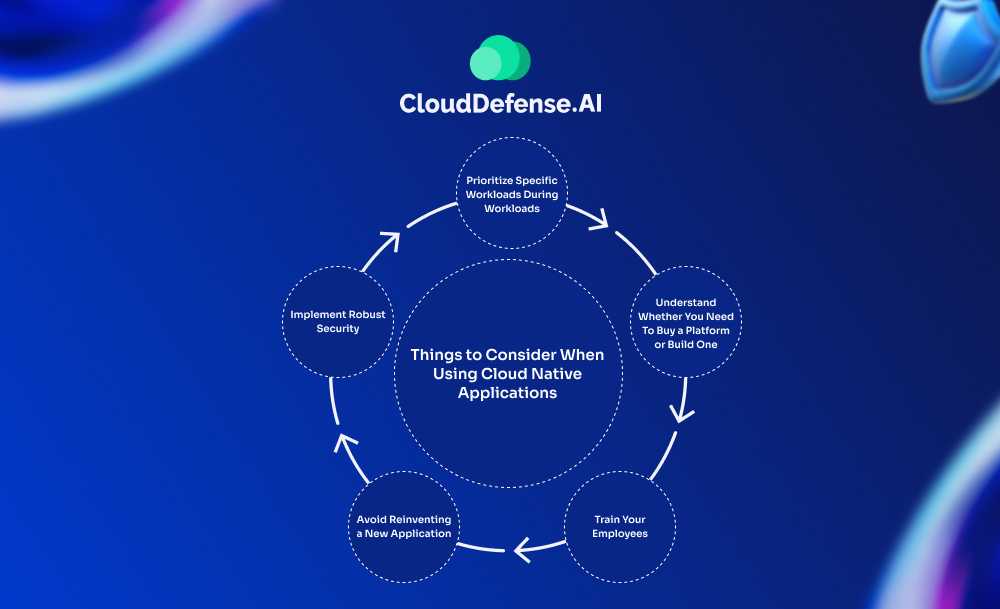
While you consider cloud native applications, there are certain things that you should keep in mind:
Prioritize Specific Workloads During Workloads
While transitioning from legacy systems to cloud native computing, not all IT functions will integrate seamlessly. You should prioritize those specific workloads that would benefit from cloud integration.
Understand Whether You Need To Buy a Platform or Build One
Cloud native computing helps you in both partnering with a cloud solution and building applications from scratch.
If you want a fresh cloud application for your organization, you can build it entirely, but it takes a lot of time and doesn’t allow you to fully utilize cloud transition. However, you can get assistance from a cloud platform where you can use your cloud computing processes to build a robust application.
Train Your Employees
When you decide to start a cloud native application, you need to arrange training programs for your employees. You need to immerse them completely in the cloud ecosystem so that they get accustomed to it and learn to make the most of it.
Avoid Reinventing a New Application
It is best to avoid reinventing a new application and utilize microservices to innovate new features whenever there is a requirement.
Implement Robust Security
Cloud native application requires strong security protocols that will prevent the application from being exploited. You should implement strong access control, implement encryption, follow secure coding practices, and ensure software updates.
Final Words
Every modern developer utilizes a cloud-native approach to build and deploy their web applications. It has become a standard norm for many organizations as it helps them to achieve the flexibility, scalability, and resilience that was not easy with legacy applications.
Not only has it allowed organizations to cater to customer requirements conveniently but also make changes without hampering the operation.
Many other benefits have compelled many organizations to transition from a legacy approach to cloud native. In this article, we have put forward all the necessary information to help you understand cloud native and how adopting cloud native applications can benefit you.
